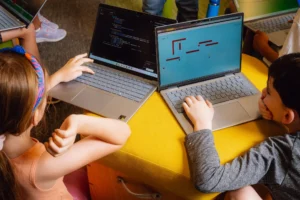Ask any parent about the challenges of raising kids in the digital age, and they’re likely to bring up screen time.
Data from the American Academy of Child and Adolescent Psychiatry shows children between the ages of 8 and 12 spend an average of four to six hours a day on their screens, while teenagers spend up to nine hours a day. The recent release of Jonathan Haidt’s explosive bestseller, The Anxious Generation, has sent shockwaves through parenting communities worldwide. Haidt’s work doesn’t just raise concerns; it sounds a deafening alarm about the devastating impact of ubiquitous devices and social media on adolescent mental health. Parents are now grappling with what Haidt describes as a “mental health crisis” among youth, directly linked to excessive screen time and social media use. His findings have ignited a firestorm of worry and debate, leaving many parents feeling overwhelmed and desperate for solutions to protect their children’s well-being in the digital age.
As a parent and educator, I often grapple with questions about the role of technology in our children’s lives. Spending hours mindlessly scrolling or consuming content with harmful messages can clearly have a negative impact on mental health. But not all screen time is the same.


